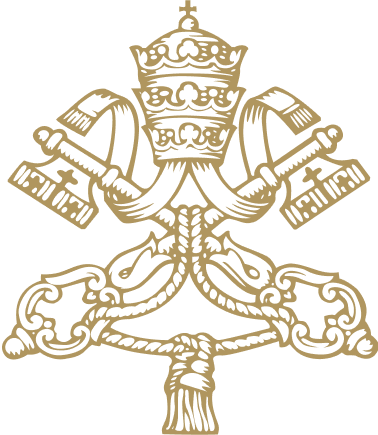ADDRESS OF THE HOLY FATHER LEO XIV
TO PARTICIPANTS IN THE EVENT PROMOTED BY THE CARDINAL DOMENICO BARTOLUCCI FOUNDATION
Sala Regia
Wednesday, 18 June 2025
___________________________________
Dear brothers and sisters, welcome!
I greet His Eminence Cardinal Dominique Mamberti, Sr. Raffaella Petrini, the esteemed speakers and the distinguished guests. I joyfully participate in this meeting in which, with words and in music, we celebrate the new Philatelic Collection promoted by the Bartolucci Foundation and issued by the Vatican Post on the occasion of the five-hundredth anniversary of the birth of Palestrina.
Giovanni Pierluigi da Palestrine was, in the history of the Church, one of the composers who has contributed the most to the promotion of sacred music, for “the glory of God and the sanctification and edification of the faithful” (Saint Pius X, Motu proprio Inter plurimas pastoralis officii sollicitudines, 22 November 1903, 1), in the delicate, yet at the same time exciting, context of the Counter-Reformation. His compositions, solemn and austere, inspired by Gregorian chant, closely unite music and liturgy, “whether [they] add delight to prayer, foster unity of minds, or confer greater solemnity upon the sacred rites” (Second Vatican Ecumenical Council, Constitution Sacrosanctum Concilium, 112).
Moreover, polyphony itself is a musical form rich in meaning, for prayer and for Christian life. Indeed, first of all it is inspired by the sacred Text, which proposes to “clothe with a fitting melody” (Inter sollicitudines, 1) so that it may better reach “the intelligence of the faithful” (ibid.). Moreover, it achieves this purpose by entrusting the words to several voices, each repeating them in its own original way, with varied and complementary melodic and harmonious movements. Finally, it harmonizes the whole thanks to the skill with which the composer develops and intertwines the melodies, respecting the rules of counterpoint, making them echo one another, sometimes even creating dissonances, which are then resolved in new chords. The effect of this dynamic unity in diversity - a metaphor for our common journey of faith under the guidance of the Holy Spirit - is to help the listener enter ever more deeply into the mystery expressed by the words, responding, where appropriate, with responsories or in alternatim.
Thanks precisely to this richness of form and content, the Roman polyphonic tradition, besides leaving us an immense heritage of art and spirituality, continues even today, in the sphere of music, to be a point of reference to look to, albeit with due adaptations, in sacred and liturgical composition, so that through song, “all the faithful should be led to that fully conscious and active participation in liturgical celebrations” (Sacrosanctum Concilium, 14), with the profound involvement of voice, mind and heart. Of all this the Missa Papae Marcelli, in its genre, is a quintessential example, as is the precious repertoire of compositions left to us by the unforgettable Cardinal Domenico Bartolucci, illustrious composer and for almost fifty years the director of the Pontifical Sistine Chapel Choir.
I therefore thank all those who have made this meeting possible: the Bartolucci Foundation, the speakers, the choirs and all of you. I will remember you in my prayer. Saint Augustine, speaking of the chant of the Easter Alleluia, said: “So now, my dear brothers and sisters, let us sing. … In the way travellers are in the habit of singing; sing, but keep on walking. … Make some progress, make progress in goodness. … Sing, and keep on walking. Don’t stray off the road, don’t go back, don’t stay where you are” (Sermon 256, 3). Let us embrace his invitation, especially in this holy time of the Jubilee. To all of you, my blessing.
______________________________
Holy See Press Office Bulletin, 18 June 2025
Copyright © Dicastery for Communication - Libreria Editrice Vaticana
